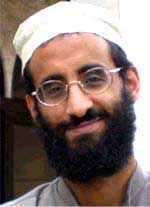Terrorists crossing AZ border into U.S.?
On a single day in April, in a special cell block deep inside the Pinal County Jail, nearly 400 inmates sat awaiting trial or extradition after being detained trying to cross the Arizona border from Mexico. Only about half of them were actually from Mexico. The cell block, owned by Pinal County, but contracted with the Department of Homeland Security, is a way station in the immigration process, where inmates are held after they are detained by the Border Patrol or Immigration and Customs Enforcement. But it’s where the inmates are from that causes concern for some critics and lawmakers. On that one day in April, according to records obtained by ABC 15, Homeland Security officials were holding inmates from Iran, Iraq, Afghanistan, Pakistan, Egypt, Lebanon, and the Sudan. “They’re coming from all over,” Arizona Senator Jon Kyl said. “And one wonders whether some of them are coming in here to commit acts of terror.”
Cartels Threaten U.S. Law Enforcement in Arizona
In the first public incident of its kind, cartels are making direct death threats to U.S. law enforcement officials in Nogales, Arizona, the police chief there told CNN Monday. Speculation about death threats by cartels towards U.S. law enforcement has been widespread for some time, but this is the first time U.S. officials along the border confirmed a case. The threats began less than two weeks ago, after off-duty police officers from the Nogales police department seized several hundred pounds of marijuana from a drug smuggling operation they stumbled upon while horseback riding in the eastern fringes of Nogales, the chief said. The smugglers in the incident managed to flee into Mexico before they could be detained. It was unclear which cartel was making the threats against the Nogales police department, but there is a turf war on the other side of the border in Nogales Sonora, Mexico, between the Sinaloa cartel and the Juarez cartel.
Mexican Gangs Maintain Permanent Lookout Bases in Hills of Arizona
Mexican drug cartels have set up shop on American soil, maintaining lookout bases in strategic locations in the hills of southern Arizona from which their scouts can monitor every move made by law enforcement officials, federal agents tell Fox News. The scouts are supplied by drivers who bring them food, water, batteries for radios -- all the items they need to stay in the wilderness for a long time. “To say that this area is out of control is an understatement," said an agent who patrols the area and asked not to be named. "We (federal border agents), as well as the Pima County Sheriff Office and the Bureau of Land Management, can attest to that.” Much of the drug traffic originates in the Menagers Dam area, the Vekol Valley, Stanfield and around the Tohono O’odham Indian Reservation. It even follows a natural gas pipeline that runs from Mexico into Arizona. In these areas, which are south and west of Tucson, sources said there are “cartel scouts galore” watching the movements of federal, state and local law enforcement, from the border all the way up to Interstate 8.
Read more...







